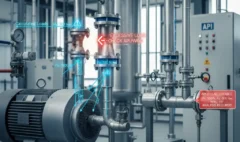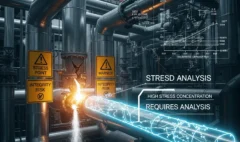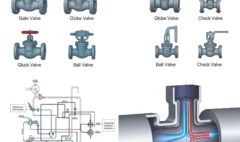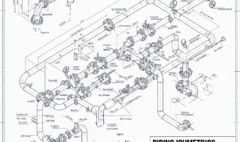ASME B31.3 and Instrument Air Systems
ASME B31.3 and Instrument Air Systems
ASME B31.3 is the go-to code for process piping design in chemical plants, refineries, pharmaceutical facilities, and similar environments. While B31.3 does not provide prescriptive rules for the design of compressors or dryers themselves, it governs the design, materials, fabrication, assembly, and testing of the piping in the instrument air system.
Key Considerations under B31.3
1. Fluid Service Classification
Instrument air typically falls under Category D fluid service, as it involves nonhazardous, nonflammable, nontoxic compressed air. This allows for more relaxed requirements compared to normal or high-pressure fluid services.
However, if air is compressed to high pressures or involves hazardous substances (e.g., oil vapors, contaminants), a stricter classification may apply.
2. Materials Selection
B31.3 outlines acceptable materials for different service conditions. For instrument air systems, common materials include:
- Carbon steel (A106, A53)
- Stainless steel (304/316) – particularly where corrosion resistance is critical
- Copper tubing – often used in localized or indoor instrument air lines
Material selection should also consider ambient conditions, corrosion risk, and compatibility with air purity requirements.
3. Design Pressure and Temperature
Design pressures must account for compressor discharge pressure, potential surges, and safety margins. Typical design pressures for instrument air piping range from 100 to 150 psig, but local standards or process requirements may dictate otherwise.
Temperature design is usually ambient or slightly elevated, but must account for local environmental conditions and any heat sources.
4. Joining Methods
B31.3 permits various joining methods, including welding, flanges, threaded joints, and tubing connections. Welded joints are common in larger diameter systems, while compression fittings and flared joints are typical in small-bore tubing used for instrument connections.
5. Inspection and Testing
For Category D service, B31.3 allows leak testing using air or inert gas rather than hydrostatic testing. Visual inspections and pneumatic tests are often used to verify the integrity of the instrument air piping.
Cleanliness and Contamination Control
One of the most important aspects not heavily emphasized in B31.3—but crucial in practice—is maintaining air quality. Instrument air must meet ISO 8573-1 standards (e.g., Class 1.2.1 or better) for:
- Particles
- Moisture
- Oil content
To achieve this, systems often include:
- Multistage filtration
- Oil-free compressors
- Desiccant dryers for -40°F dew point or better
Clean piping practices during installation (e.g., flushing, air blowing) are essential to avoid introducing contaminants that could affect instrumentation performance.
Final Thoughts
While ASME B31.3 focuses on the piping portion of the instrument air system, its principles are critical for ensuring the safe, reliable delivery of air to control systems. A well-designed instrument air network—built to B31.3 standards—supports automation reliability, reduces maintenance costs, and enhances plant safety. When designing or reviewing such systems, engineers should pay attention not just to code compliance but also to air quality, redundancy, and maintainability, which are just as vital for a robust and effective setup.








